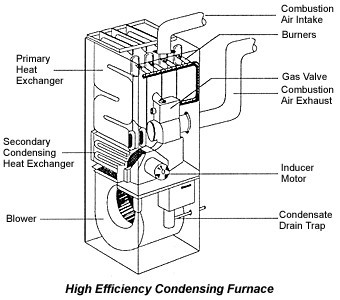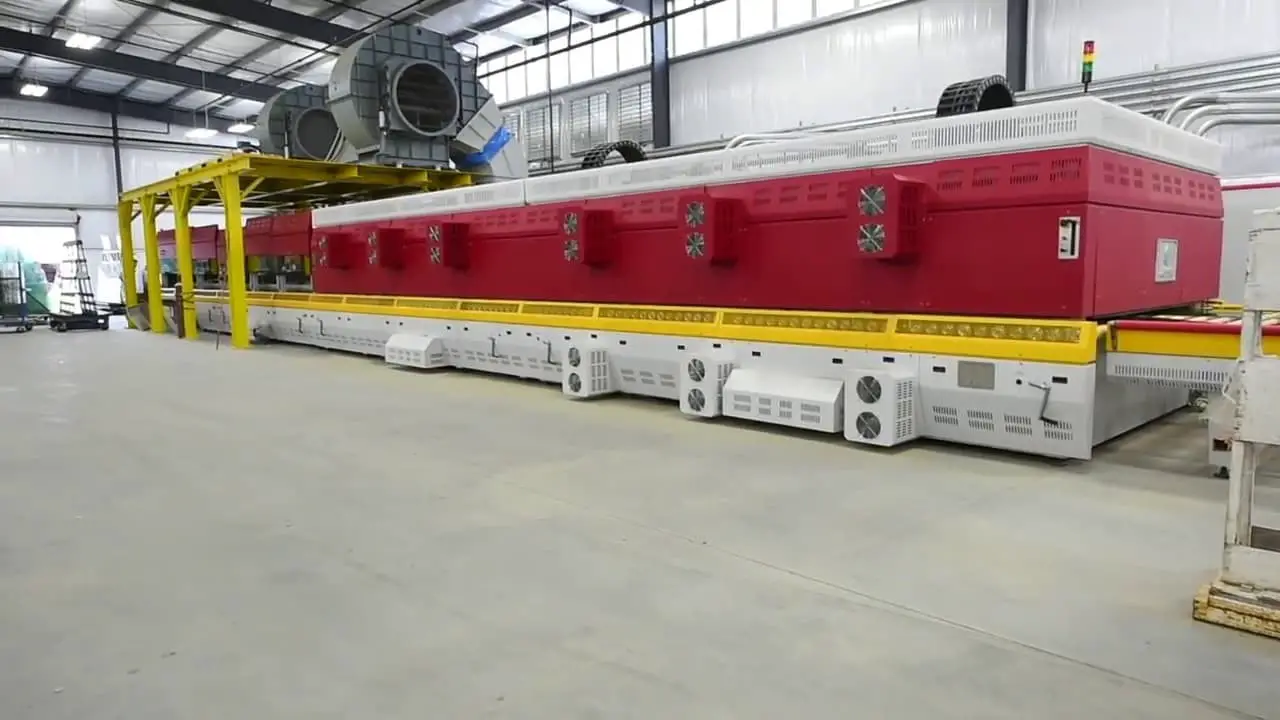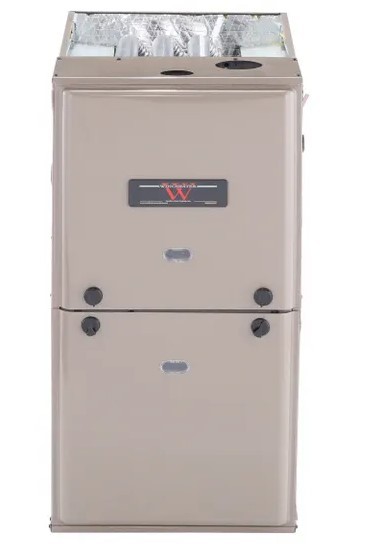30+ Different Types Of Furnaces With Pictures (Buying Guide)
A furnace is the backbone of any home’s heating system, and its importance cannot be overstated. The history of furnaces dates back to ancient times, but today, they have evolved to become an integral part of modern homes in North America. While gas and electric furnaces are the most common types, there are other options available that cater to different needs and preferences.
In this article, we will delve into the various types of furnaces, their characteristics, and how they can be used effectively.
What is a furnace?
Furnaces are a staple in regions where winters are prolonged and unforgiving, serving as the primary source of warmth within homes. Their operation is based on circulating hot air through a network of pipes and ducts. The warm airflow is then directed to grills and air registers via various routes, contingent upon the furnace type and its airflow dynamics.
In terms of fuel sources, furnaces are classified into distinct categories, with natural gas, propane, electricity, and oil being some of the most common options.
Categories
When it comes to furnace design, a crucial aspect is the way heat is distributed and the standard components used. To better understand these variations, let’s delve into the main categories: natural draft, forced air, forced draft, and condensing furnaces. Each of these types has its unique characteristics, influencing how they function and perform.
Natural draft

This oldest furnace category showcases fundamental designs with limited controls. The warmth generated by this type of furnace is dispersed through chimneys and pipes, which distribute it across the room and flooring. The intensity of the heat depends on the quantity of fuel poured into the system. Interestingly, electric blowers were later introduced to regulate the flow of heat, providing greater control over the overall heating experience.
Forced air

The mid-century era was a golden age for forced air furnaces, which offered a significant leap forward from their natural draft predecessors. These behemoths, characterized by their all-steel exteriors designed to retain heat, were undoubtedly larger and more imposing than their earlier counterparts. A key innovation that set them apart was the incorporation of electric blowers, which facilitated airflow through pipes and vents into the chimney.
Forced draft
The third model stood out for its enhanced efficiency compared to the initial two. Its steel heat exchange and multi-speed blower allowed it to excel in terms of compact design, making installation a breeze. The combustion air blower, meanwhile, boasted remarkable fuel economy by efficiently distributing hot air throughout the room. Furthermore, these units were seamlessly integrated with AC systems for precise temperature control.
Condensing

This particular type is renowned for its exceptional fuel efficiency. Characterized by a draft inducer, secondary heat exchanger, and built-in combustion area, it offers a unique combination of features that work in harmony to provide superior performance. The pipes used in this system are typically made of PVC due to the enhanced condensation process and heat distribution capabilities.
One of its notable advantages is its flexibility, allowing for easy installation both horizontally and vertically thanks to its versatile heat exchanger design.
Types Of Furnaces (Fuel type)
When evaluating the environmental and economic viability of your furnace, selecting the right fuel type is crucial. The suitability of a particular fuel type depends on various factors, including its availability in your area, the size of the space being heated, and your geographical location.
Oil Furnace

If space permits storage of furnace oil at home, an oil furnace is another viable option to consider. Notably, these units emit higher heat BTUs and are relatively low-maintenance. However, it’s essential to acknowledge the drawbacks: regular refills will be necessary, as well as potential environmental concerns due to the production of tar and soot.
Electric Furnace
In terms of furnace fuel types, this option undergoes the most significant transformation. Not only is it widely available, but it also boasts a lower operating cost, simplified installation process, and zero carbon emissions. For those seeking effortless operation and minimized running expenses, electric furnaces emerge as a top contender.
Propane Furnace

The convenience factor of this fuel type lies in its ease of access and installation, as it doesn’t require the hassle of gas lines. Typically, it’s connected to a propane tank, making it a popular choice due to its immediate heating capabilities. Nonetheless, users must consider the necessity for continuous refills and the relatively high cost of propane gas.
Wood Furnace
When it comes to fuel sources, wood stands out as an ideal choice due to its reliability, affordability, and ease of access. One of the primary advantages is its cost-effectiveness, as you don’t need to worry about constant refills. Additionally, wood furnaces are surprisingly portable, allowing for effortless cleaning or relocation if needed.
While this flexibility comes with some responsibilities – such as ensuring a steady supply of wood and occasional soot cleaning – the benefits far outweigh the drawbacks.
Natural gas Furnace

Natural gas stands out as a dependable fuel source for furnaces. Its accessibility, affordability, and ease of heating make it an attractive option. The even heat distribution it provides is another significant advantage. Furthermore, the installation process is straightforward, and repairs are relatively inexpensive, making it a hassle-free choice. Additionally, natural gas is a clean-burning fuel, aligning with eco-friendly values.
Its reliability and affordability make it an ideal choice for those seeking a sustainable solution.
Coal Furnace

This eco-friendly alternative, like wood, does not require refills, making it a cost-effective option. Its modular design also features easy-to-detach parts that are simple to maintain and inexpensive to repair. When it comes to heating performance, this option delivers fast and even coverage. While it has its advantages, the presence of soot and fumes is a notable drawback. Additionally, some users may be concerned about its environmental impact.
Types of gas furnaces
Gas furnaces have earned their reputation as reliable performers due to their robust construction and remarkable energy efficiency. When evaluating potential purchases, it’s essential to consider the following factors when selecting the most suitable model.
Single-Stage furnace
Amazon shopping allows for the flow of gas into the furnace, relying on a single valve that can be closed or opened to control gas flow. The simplicity of this mechanism lies in its straightforward operation, which pumps hot air at a constant speed. While this option may not offer sophisticated temperature control, it remains a suitable choice for areas with relatively mild cold temperatures. Installation is also relatively effortless and the cost is relatively low.
Two-Stage furnace
Opt for a Two-Stage Furnace from Amazon if you desire finer control over your home’s heating system. This model allows for seamless transitions between low and high power settings, making it ideal for maintaining consistent temperatures throughout your living space. Additionally, the two-stage design enables extended heating cycles, which can be particularly beneficial in colder climates or larger homes. By syncing it with your thermostat, you can ensure a more efficient distribution of heat.
Modulating furnace

Modulating furnaces offer a unique advantage in terms of heat control, allowing users to adjust the temperature output at will. The majority of these systems operate on a 1% incremental increase or decrease in heat level, providing precise monitoring and control over the amount of heat distributed. This feature is particularly beneficial in areas with prolonged and unpredictable winters, as it enables users to adapt to changing conditions with ease.
Furthermore, modulating furnaces are renowned for their exceptional fuel efficiency, making them a popular choice among homeowners seeking a reliable and cost-effective heating solution.
Types of furnace filters
Properly functioning furnace filters play a vital role in maintaining the longevity and efficiency of your heating system. By capturing harmful particles and larger debris, these filters prevent damage to the furnace’s heating process and overall functionality. A critical aspect of their performance is measured by durability ratings and the size of microns they can effectively filter out.
Fiberglass filters
Amazon offers a range of affordable options, including disposable filters designed specifically for furnaces. These filters provide effective dirt prevention on fan motors, heat exchangers, and other surfaces within the furnace. Although an economical choice, they do come with limitations, as they are not suitable for use in furnaces that involve hazardous chemical substances, offering only minimal protection against such threats.
Pleated filters
For those seeking a reliable air purification solution, Amazon offers an impressive range of products that can filter particles as small as 0.3 microns, effectively straining bacteria and viruses from the air. When compared to traditional fiberglass or synthetic filters, these high-performance filters stand out for their remarkable durability and efficiency.
With the ability to eliminate a significant percentage of airborne pollutants, they are an excellent choice for anyone looking to significantly improve indoor air quality.
Electrostatic filters
Amazon’s self-charging fibers are a game-changer when it comes to keeping the air clean. These innovative fibers attract dust and other particles, making them an effective way to keep your space tidy. What’s more, they come in two convenient forms: washable and disposable. While both options have their advantages, the washable type is generally preferred due to its long-lasting nature and ease of maintenance.
To keep your fibers in top condition, simply lightly brush them with soap and water – just be sure to dry them thoroughly before reinstalling to prevent mildew buildup.
Carbon filters
The primary function of this type of furnace filter is to eliminate foul odors stemming from contaminated air particles. Its efficacy, however, hinges upon the quantity of carbon infused within the filter. As the carbon level diminishes, so too does the filter’s ability to effectively purify the air.
HEPA filters
This high-efficiency air purifier filter, designed to eliminate particles down to 0.3 microns in size or larger, achieves its goal by effectively capturing airborne pollutants. However, one significant drawback is that it can noticeably reduce airflow within the home, potentially impacting energy consumption.
Types of industrial furnaces
Furnaces play a crucial role beyond providing warmth to our homes. In fact, they are instrumental machinery in various industries worldwide, particularly in processing metals such as steel and alloys. This versatile equipment is also used in the production of industrial-grade materials, including gears, sheets, rods, and other essential components.
Bell Furnace

One of the most distinctive characteristics of this furnace is its mobile dome design. This innovative feature allows you to lift the hood at will, providing unparalleled control over the atmosphere within the chamber. As a result, it’s ideal for a range of applications, including tempering, annealing, normalizing, and relieving stress in steel plates.
Additionally, the furnace can be easily installed with multiple bases, enabling treatment of various shapes and forms, such as coils, rods, sheets, and more.
Box Furnace

These kilns are designed for preheating, tempering, calcining, and heat treating various industrial materials. They typically feature a swing-open door or vertical lift design, which facilitates good airflow and insulation. This allows for efficient and controlled processing of large quantities of materials.
Due to their size and weight, these kilns often require the use of forklifts or other heavy machinery to relocate them within a facility, underscoring their role in treating industrial materials on a massive scale.
Pit Furnace

This type of furnace is available in both electric and gas variants, commonly referred to as top-load furnaces. Its applications extend beyond the manufacturing of aircraft and automotive parts, as it’s also widely utilized by various industries including mining, wind energy, and machine production companies. The key requirement for these furnaces is a controlled atmosphere, allowing for precise temperature control and distribution of heat at varying temperatures.
Forging Furnace

The open-hearth design of these ovens makes them surprisingly relatable to traditional pizza cooking methods. Unlike some industrial processes, this setup allows for a more transparent and tangible process, as it’s easy to visualize the heat being transmitted and metals reaching a certain temperature that renders them suitable for forging. The recent addition of auto charge and discharge features has further streamlined the operation, making it even more efficient.
Quenching Furnace

The primary purpose of this furnace is to regulate the rapid quenching of hardened steel and other materials, thereby preventing overheating and underheating, which ultimately enhances the toughness of the material. Its applications are diverse, extending to the manufacturing of bearings, gears, agricultural components, and construction equipment.
Rotary Furnace

The featured furnace boasts a unique design, consisting of a lined vessel with an integrated barrel. To enhance efficiency, this setup is mounted onto a rotating drive, allowing the barrel to move in a continuous circular motion throughout the heating cycle. This innovative configuration enables the furnace to excel in calcination and oxidation processes.
Salt Bath Furnace

The gold standard among industrial-grade furnaces boasts heating treatments that are a whopping five times faster than those found in air furnaces. Its unique process leverages the power of chloride, cyanide, and other salts to apply pressure heat to various materials. This technology is particularly well-suited for applications such as annealing, tempering, brazing, and shaping extremely hard materials like steel alloy.
Tempering Furnace

Tempering heat treaters play a crucial role in enhancing the strength and durability of metal products. By carefully regulating the process, they enable the creation of materials that strike a perfect balance between hardness and elasticity. This is typically achieved through the combination of tempering and quenching furnaces, which work in tandem to produce the desired properties.
To ensure optimal results, these heat treaters must be operated within controlled environments, taking into account factors such as temperature, atmosphere, and timing.
Vacuum Furnace

A common feature in many industrial settings is a unique heating system that incorporates a built-in vacuum mechanism to regulate temperature control, safeguarding metal components and heated steel from potential damage. Furthermore, strategically placed pumps surround the vacuum chamber, ensuring the environment remains pristine by preventing contamination and oxidation processes.
BTU/Hour
In the realm of heating, a crucial term that demands attention is British Thermal Unit (BTU). Essentially, it serves as the benchmark for determining the amount of heat required to incrementally raise the temperature of one pound of water by one degree Fahrenheit. This standard unit of measurement has far-reaching implications in the context of furnaces.
Notably, an increased BTU rating can expedite the generation and dissemination of heat, although this does not necessarily translate to a proportional increase in overall power. Moreover, as the BTU rating increases, so too does the energy consumption of the furnace.
Low

While an electric furnace may seem like an attractive option due to its affordability, it’s essential to consider your specific situation before making a decision. For those with smaller homes or living in mild climates, these furnaces can be a great choice. However, for individuals with larger spaces or experiencing drafty conditions, an electric furnace might not be the most suitable option as it may need to cycle off and on for extended periods.
Nonetheless, for cozy apartments or smaller dwellings, this type of furnace can provide reliable warmth.
Medium

When it comes to selecting a furnace for an average-sized home with well-insulated interior spaces and stable temperature conditions, this option stands out as a top choice. However, for optimal performance, it’s often recommended that professionals handle the installation process, as they may need to source additional components to ensure seamless operation.
High
Features
Like any other appliance, furnaces have their unique set of characteristics and features that can significantly impact their overall performance. In particular, some attributes are more crucial than others in ensuring optimal functioning. As we explore the world of home heating, it’s essential to identify these standout features that make a real difference.
Energy Star rated

When selecting appliances, including furnaces, one crucial feature to consider is their Energy Star rating. An Energy Star certified furnace stands out for its impressive energy efficiency. Notably, these units consume 20-30% less energy compared to government-set standards, making them an attractive option for those looking to reduce their utility bills and minimize their environmental footprint.
Smart technology
Opting for advanced features can significantly enhance the performance of your heating system. One such way is by incorporating smart-controlled furnaces that boast intelligent capabilities like automatic on/off functions, temperature sensing and adjustment, zone-specific control sensors, airflow monitoring, and filter change notifications. Additionally, remote airflow monitoring through an app can provide unparalleled convenience.
Sealed combustion
When it comes to ensuring your home’s safety and reducing its environmental impact, a sealed combustion furnace plays a crucial role. This type of furnace significantly minimizes the risk of carbon monoxide poisoning by containing any potentially hazardous fumes within the system. Moreover, the sealed design allows for more efficient energy usage as it retains heat for consistent and even heating, ultimately contributing to a more sustainable living environment.
Air flow
Proper airflow is crucial for a furnace’s efficiency and performance, regardless of whether it’s used for heating or cooling. In fact, airflow refers to the quantity and quality of air moving from the furnace, which can be impacted by factors such as improper installation, clogging, or inadequate clearance. To ensure your furnace operates effectively, it’s essential to understand the various types of airflow that can affect its performance.
Upflow

When it comes to furnaces that emit warm air, a specific design stands out – one that distributes heat from the top. This configuration makes sense when you’re planning to install your ductwork above the furnace unit. In these scenarios, this type of airflow is particularly well-suited.
Downflow
Amazon’s innovative cooling system functions by circulating cool air from above, which then escapes as warm air at the bottom. This design is particularly well-suited for homes with ductwork installed at the base. By harnessing natural convection, this system efficiently maintains a comfortable indoor climate.
Horizontal
Amazon’s latest innovation has taken the form of cleverly designed attic ventilation systems. These units have a unique ability to efficiently circulate both warm and cool air, effortlessly sliding sideways into tight spaces like basements and attics due to their compact horizontal design. This allows for seamless installation without requiring significant vertical clearance, making them an ideal solution for homeowners seeking effective and space-conscious solutions.
Upflow/horizontal
The versatile shop on Amazon allows for flexible installation options, including both upflow and horizontal configurations.
Downflow/horizontal
The versatility of this furnace type lies in its ability to be installed in two distinct configurations: a downflow setup, where the furnace draws air from the floor and pushes it back out through the ceiling vents; and a horizontal installation, where the furnace sits flat against a wall and blows warm air horizontally throughout the space. This flexibility makes it an attractive option for homeowners seeking to optimize their heating system.
Multiposition
One of the most versatile types of air flow systems is the option that offers installation flexibility. This particular design allows for a range of configurations, including upflow, downflow, horizontal, as well as unique combinations such as upflow-horizontal, downflow-horizontal, and even multiposition, providing users with unparalleled adaptability.
Top furnace brands
When it comes to finding the best furnace brands, it’s essential to consider the latest market trends and consumer reports. According to the 2021 Consumer Report, a significant number of top-rated furnace brands emerged from the hundreds available in the market. Among these exceptional brands are American Standard Furnaces, Amana Gas Furnaces, Bryant Furnaces, Carrier, Daikin, Goodman, Heil, Lennox, Rheem, Ruud, Train, and York.
These renowned brands have established themselves as industry leaders by providing high-quality products that meet customers’ diverse needs and preferences.
Factors to consider when buying a furnace
In our previous discussions, we’ve touched on the key factors to consider when purchasing a furnace. To provide a comprehensive overview of the process, we’ll now build upon these essentials by examining additional considerations crucial to making an informed decision about the right furnace for your home.
Local climate
When it comes to purchasing a furnace, it’s essential to consider the local climate as a crucial factor in your buying guide. If you live in an area with mild winters, you may not need a furnace with extremely high BTU ratings. However, if you’re in a region with harsh and prolonged winters, investing in a furnace with advanced features, such as smart technology or high-BTU capabilities (either electric or gas-powered), can provide greater benefits.
By taking your local climate into account, you can make an informed decision about the right furnace for your needs.
Size
When selecting a furnace, its size is typically determined by its BTU rating, with lower BTUs indicating smaller furnace sizes. However, there’s more to it than just that single factor. Other influential variables include local climate conditions, the size and layout of your home, the number and size of windows, as well as the height of your ceiling.
If you’re not feeling confident in your ability to accurately calculate the ideal furnace size for your specific situation, it may be wise to consult with an experienced HVAC professional.
AFUE ratings
Annual Fuel Utilization Efficiency (AFUE) plays a crucial role in determining the energy consumption of a furnace. By evaluating its AFUE rating, homeowners can make informed decisions about their running costs. In particular, furnaces with an 80% AFUE rating are notable for their energy and cost efficiency. If you’re looking to install a furnace that won’t break the bank, focusing on models within this AFUE range is a great starting point.
Budget
When evaluating the overall expenditure of installing a furnace, it’s crucial to consider not only the initial investment but also potential long-term repair and maintenance costs. Additionally, you’ll need to factor in brand selection and installation expenses. In terms of unit cost, natural gas furnaces typically range from $700 to $6,000, while electric furnaces fall within a narrower bracket of $600 to $3,000.
Installation costs for both types of furnaces are generally similar, ranging from $1,000 to $3,500.
Brand
While budget range is one consideration, it’s essential to recognize that a brand’s reputation plays a significant role in determining performance and quality. Not all furnaces are created equal, with each manufacturer boasting unique features that can significantly impact your overall experience. Before making a purchase, take the time to research a brand’s offerings and identify their most reliable models. This proactive approach will help ensure you’re getting the best furnace for your needs.
Reviews
When it comes to selecting a furnace, customer reviews and consumer surveys play a vital role. These sources provide valuable insights that can help you make an informed decision. While it’s tempting to assume that cheaper options are always the best choice, this assumption can be misleading. In reality, a low price tag often translates to poor performance, durability, and longevity.
By considering firsthand information and expert opinions, you can effectively narrow down your furnace brand list and find a model that meets your specific needs.
Warranty
When searching for a reliable furnace brand or model, a minimum of 10 years of warranty coverage can be an attractive starting point. However, it’s crucial to delve deeper and examine the scope of the warranty as well. A longer warranty period is only beneficial if the coverage is comprehensive and provides adequate protection against potential issues.
FAQs
How long does a furnace last?
The typical lifespan of a furnace varies significantly depending on several factors, including the brand, type, fuel source, BTU output, and maintenance habits. On average, furnaces can last anywhere from 10 to 20 years, making a 10-year warranty a valuable investment for homeowners seeking long-term protection.
Is it OK to leave the furnace running all day?
In reality, there’s no set-in-stone guideline governing the number of hours a day the furnace should be left on. As such, it’s perfectly acceptable for it to run continuously throughout the day. In fact, HVAC experts will attest that extended fan operation can have a positive impact on indoor air circulation. The only factor worth considering is the thermostat’s heat level.
When should you replace your furnace?
When evaluating the lifespan of a furnace, it’s essential to consider not just age but also other indicators that may signal the need for replacement.
If you’re experiencing one or more of the following symptoms, it might be time to consider upgrading your furnace: The furnace is getting old Your electricity bill is consistently rising Soot, dust, and dirt particles are accumulating in your home You struggle to maintain a comfortable humidity level at home Visible signs of rusting or cracks are appearing around the furnace system Frequent repairs are required
How do I know if my furnace has a carbon monoxide leak?
Carbon monoxide, a silent killer when inhaled, demands attention. To stay safe, it’s crucial to recognize the warning signs of a carbon monoxide leak emanating from your furnace. Unusual occurrences such as heavy air condensation on windows, soot-like stains around the appliance, and smoke or fumes emitting from the furnace itself are telltale indicators. Furthermore, an overheating smell or a yellow flame instead of the usual blue one can signal a potential issue.
Being aware of these subtle yet critical signs will empower you to take prompt action, ensuring your well-being and that of your loved ones.
Conclusion
As the cold months approach, the demand for furnaces to provide warmth and comfort in homes reaches a peak. While selecting the right furnace can be overwhelming, it’s crucial to consider multiple factors beyond just knowing the type that suits your needs. Airflow, filter type, fuel type, and more all play a significant role in determining the ideal furnace for your home. A comprehensive buying guide is essential when investing in such an important appliance.
Moreover, it’s vital to research consumer reports, read reviews, and consider how local climate conditions will impact your furnace’s performance. Additionally, household size should also be taken into account to ensure you find a furnace that meets the unique demands of your space.
Related Posts
When it comes to maintaining a comfortable and healthy living space, managing humidity levels in your basement is crucial. To help you achieve this goal, we’ve compiled a list of the top 16 dehumidifiers for basements in 2024. This comprehensive buying guide will walk you through the key factors to consider when selecting the perfect unit for your unique needs.
Whether you’re dealing with dampness, mold growth, or simply seeking to create a more enjoyable living area, our expert advice will ensure you make an informed decision. In addition to dehumidifiers, we’ve also covered various other home appliances and HVAC-related topics, including the steps to become an HVAC technician, troubleshooting guides for common issues like Amana dryer not heating, furnace not blowing hot air, and sudden loss of hot water.
Our goal is to provide you with a one-stop-shop for all your home maintenance and repair needs.






